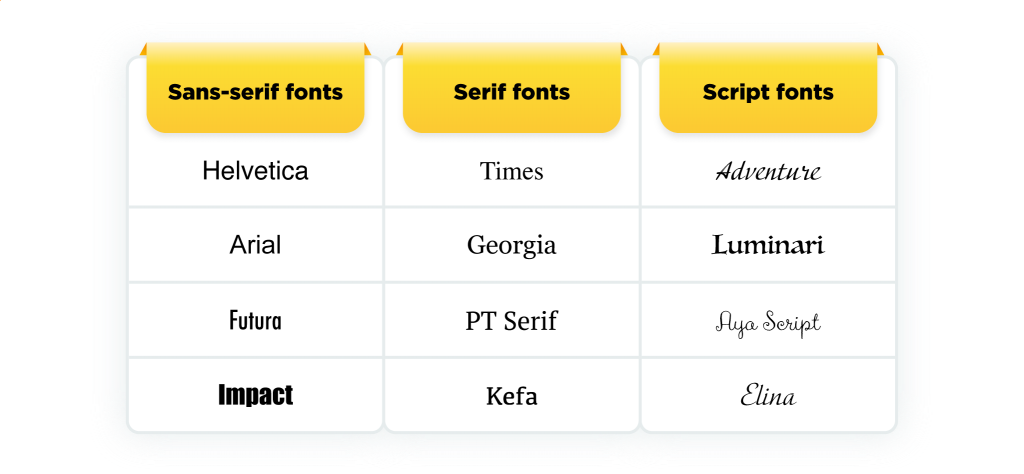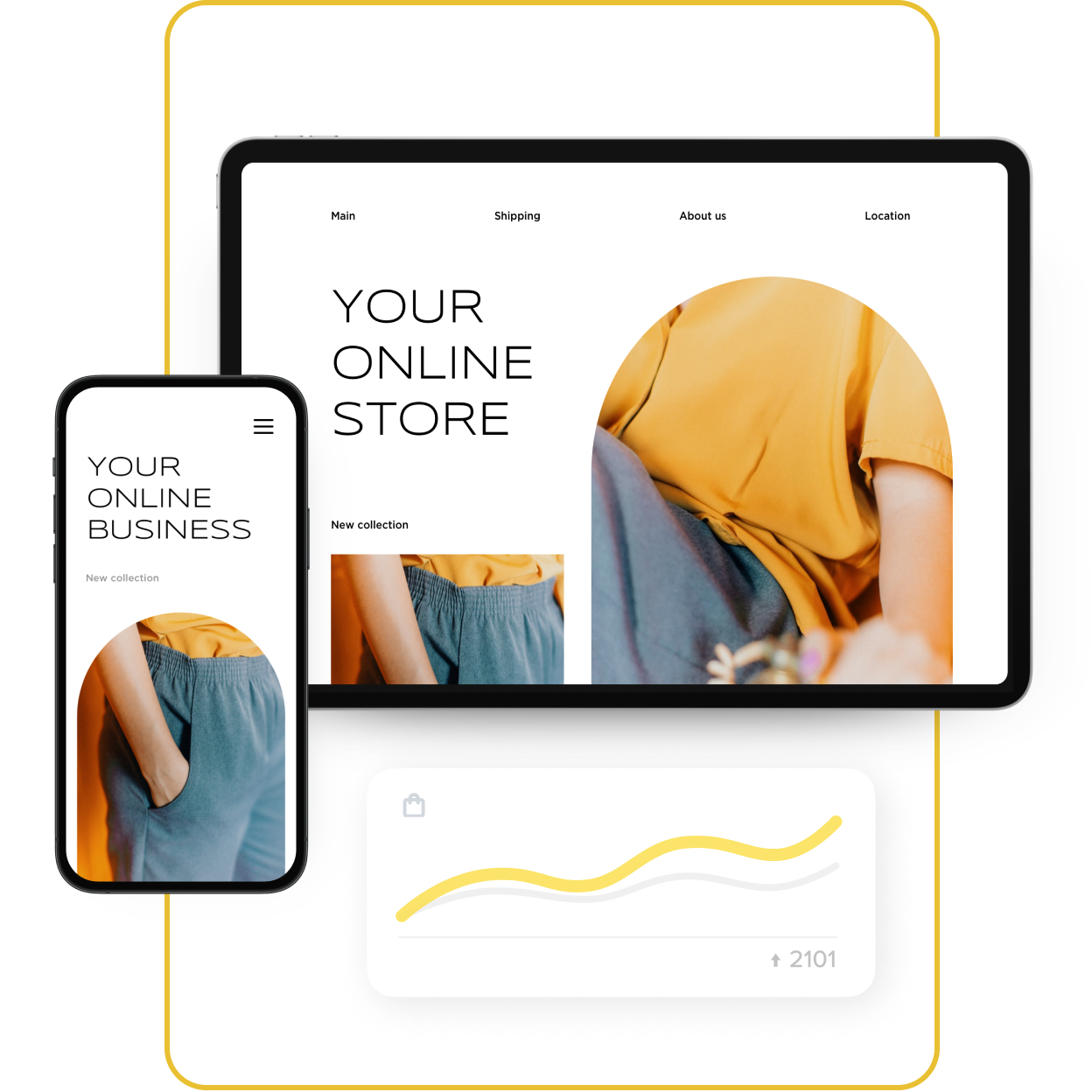Shoppers are spending record amounts of money online, driving global from an estimated $4.9 trillion in 2021 to $6.5 trillion in 2023. While this growth is creating opportunities for online stores of all sizes, the ones best poised to succeed are bolstered by a thoughtful brand strategy.
An effective brand clearly captures the uniqueness of its products and helps persuade customers to action by inspiring an emotional response. Learn how to distinguish your small
In this post:
- What Is a Brand and Why Does Your
E-commerce Business Need One? - How to Build a Brand
- Ensuring Brand Consistency
- Delivering on Your Brand Promise
What Is a Brand and Why Does Your E-commerce Business Need One?
At first glance, it seems like a brand is simply a logo and color scheme. Under the surface, however, it has the powerful ability to spark emotional responses in customers. A brand is defined as how people perceive a business:
- The emotional response they have to a company
- The value they see in its products
- The benefits they associate with buying from the company.
All small businesses can benefit from a branding strategy. Because once you’ve distinguished your brand and cultivated an image that resonates with your target audience, your brand will:
- Generate awareness so customers know what your company stands for and what your brand promises to provide for them.
- Cultivate brand loyalty. Customers who trust your business are more likely to purchase from you or try out your newest product offerings.
- Help you stand out from your competition. Customers faced with similar products tend to pick the brand that’s familiar, or that generates some type of positive feeling or response.
How to Build a Brand
A brand build starts with your company’s mission statement and values. Once you’ve identified this essence of your business, you can pinpoint the emotions you want to inspire in customers when they search your website or buy your products.
For example, an environmentally friendly product can make customers feel they’ve made a socially conscious choice. A coveted luxury item can create a sense of elevated social status. A rugged outdoor brand can generate excitement and the expectation of adventure.
You can build your brand by focusing on four key strategies:
- Developing a brand personality
- Positioning the brand in the market
- Designing the brand’s visual elements
- Marketing the brand.
1. Develop a brand personality
Begin by considering the driving goal of your venture and why it matters. You started this company with a purpose: think about what that is and how to communicate this value to others. This step is critical because if you don’t know why your company is important, it’s impossible to communicate unique selling points to customers.
Your company’s brand should evolve naturally from the core values of your business. Take a few moments to condense the essence of your company into the following points:
- What you sell
- What problems your products solve for customers
- How you want your customers to feel.
2. Position the brand
When you’ve determined the purpose of your business, start shaping your branding strategy. In this step, you’re exploring how your small
Take a look at competing brands and the audiences they’re targeting, and then answer these questions as concisely as possible:
- Who is your target market?
- What’s the main benefit of your product? How does it improve your customer’s life?
- What makes your business unique?
- Why should customers choose your business?
How to write a brand positioning statement
Now, rework these answers into a
We provide [product] to [target audience] that [solves this problem]. We [differentiation].
Let’s try this template with a hypothetical business. ABC Baking makes gourmet brownies. They fill the gap between baking at home and shopping at the neighborhood grocery store. The brand positioning statement could read:
“ABC Baking sells premium brownies to food lovers who don’t have time to bake from scratch, but want to share the joy of quality artisanal baking with family and friends. Our brownies are created by a pastry chef with 15 years of experience and based on recipes tested to perfection.”
Once you’ve written a positioning statement, review it from the point of view of your target audience. Would it entice them to try this product? Refine your brand positioning statement until you develop it into one that fully captures your ideal customer’s desires and needs.

Determine the brand’s tone
To communicate your positioning statement to customers, you need to find your brand’s voice. Come up with words that describe your brand, such as:
- Sophisticated
- Trustworthy
- Dependable
- Exciting
- Whimsical
- Friendly
- Playful
- Warm
- Knowledgeable
- Nostalgic
- Inspiring
- Bold.
These words will shape the tone you use to deliver your message, whether it’s on your website or social media platforms. If your brand is a little cheeky, for example, aim for funny and entertaining copy. A
3. Design the brand
After you’ve worked through your brand’s identity, it’s time to translate your identity into visual elements that you can market to customers. The brand design should use consistent colors, fonts, and brand imagery to connect with the target audience.
Tips on choosing brand colors
Your help establish your visual identity. There’s an entire body of work on color psychology — warm colors like red and orange create a sense of vibrancy and excitement. Cool colors, like blue and green, are soothing and calm.
Choose one or two colors that complement your brand positioning and the traits you customers to associate with your business. Here are some example characteristics commonly associated with certain colors:

A brand color palette usually consists of a dominant color, an accent color, and neutral colors for background. These can be monochromatic or complementary. Use this color scheme in all of your marketing campaigns.
Selecting brand fonts
In the same way that colors inspire an emotional or aesthetic reaction, so can fonts. In general:
Sans-serif fonts (such as Helvetica or Arial) are clean and modern- Serif fonts like Times are traditional, delicate, and classic
- Script fonts add a splash of elegance, creativity, and personality.

You can choose a complimentary font pair so that you have a body copy font for most of your text, and a heading font for emphasis. Similar to brand colors, brand fonts should be used consistently in all marketing pieces.
Also: 15 Perfect Font Pairings for Your
Developing a logo
A logo is the most important part of a brand build because it’s used to instantly identify your company. It brings together all the elements of your brand design, including color, font, and imagery.
There are a few different types of logos:
- Wordmark or logotype: With this type of logo, your brand name is spelled out. The text is treated stylistically in terms of shape, spacing, and color. The text works alone with no accompanying image. Google and HBO both use wordmarks.
- Lettermark: Also known as a monogram, this type of logo uses the first letter or initials of your brand to create an
eye-catching symbol. The business name is usually underneath. McDonald’s is one of the most widely recognized lettermarks. - Pictorial or symbol logo: These logos use a design or illustration. They can be abstract, like Nike’s swoosh, or more literal, like Twitter’s bird.
- Emblem: An emblem logo contains the company name inside a shape to create a crest or badge. BMW is an example of a popular emblem logo.

Consider adding design elements to help tie your logo to your brand positioning. Curves add softness, circles imply harmony, and squares or rectangles suggest stability and strength. For maximum impact, keep the logo uncluttered and use
A is an easy and efficient alternative to design a logo if you have limited time and budget to work with.
Choosing brand imagery
Brand imagery consists of stock photos, illustrations, symbols, and shapes used to convey your identity. These visual elements should have a consistent style and work with your color palette and fonts to communicate certain emotions.
4. Market the brand
Once you’ve worked through the above steps, you should have an
- Purpose and core values of your business
- Tone and language to be used in your messaging
- Fonts, colors, logo, and brand imagery to represent your message visually and connect to your target audience.
These branding elements can be used on all of your marketing assets, including your:
- Website
E-commerce store- Blog posts and content marketing
- Social media platforms
- Digital ads
- Marketing campaigns emails
- Videos
- Packaging
- Invoices
- Business cards
- Email signatures.
Small business branding takes time, but when the pieces come together, the cohesion helps customers connect with your brand and remember it long after they’ve left your shop or website.
Ensuring Brand Consistency
The minute you start presenting your brand through digital ads, email campaigns, and content marketing, you’re laying the foundation for brand awareness. But, your brand can only be successful if it’s consistent. If your packaging has a different color palette than your
Consider creating brand guidelines to ensure a consistent look, feel, style, and voice. This keeps team members and consultants on the same page when they’re working on messaging for different channels.
Delivering on Your Brand Promise
You’re not simply selling products when you’re marketing, you’re promoting your brand. However, as much as you try to shape public views of your business through a branding strategy, a customer’s impression ultimately depends on their experience.
Whether they’re buying from your
Getting Inspired to Brand Your Business
Branding is an essential part of building a successful
Remember, your brand is connected to the purpose of your company. Start with a thoughtful analysis of your core values and brand positioning. Once it’s clear what your business represents, other elements such as color, tone, and font will naturally fall into place.
Also: branding doesn’t work in isolation. If you create an effective brand that’s truly relevant to your core business, it naturally influences product development, pricing, marketing, advertising, and customer experience. It’s worth the investment of time. The more your brand resonates with customers, the stronger your brand and business grow.
��
- What Is Branding: The Ultimate Guide
- Brand Identity: Your Guide to Captivating Hearts and Minds
- Elevating Your Brand Without Breaking the Bank
- How To Create An Awesome Logo For Your Brand
- How to Come Up with Logo Ideas
- What Makes a Good Logo
- How Much are Logo Designs
- How to Trademark a Name and Logo
- Business Names Ideas: How to Choose the Best Store Name
- How to Build a Brand: A Playbook for Small Ecommerce Businesses
- How to Create a Strong Value Proposition for Your Online Store
- Mastering the Art of Product Presentation








